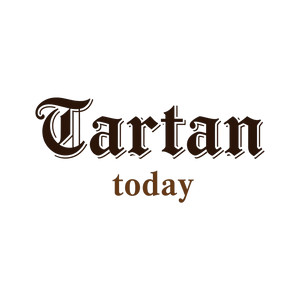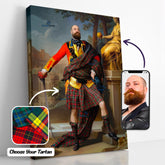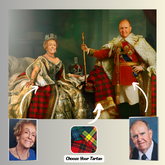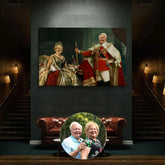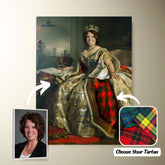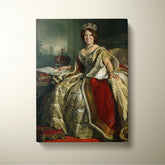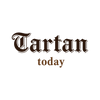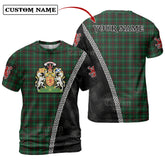-
Personalized Clan Beveridge Tartan Bagpipe Ornament with Custom Name – Scottish Christmas Tree Decoration IF19
Personalized Clan Beveridge Tartan Bagpipe Ornament with Custom Name – Scottish Christmas Tree Decoration IF19Celebrate your Scottish heritage with this unique wood & acrylic tartan ornament. Perfect as a personalized Christmas decoration or a meaningful gift for friends and relatives on special occasions such...- From $19.99 USD
$25.99 USD- From $19.99 USD
- Unit price
- per
Save $6.00 -
Clan Beveridge Tartan Crest Star Ceramic Ornament AJ11 - Beveridge Tartan
Clan Beveridge Tartan Crest Star Ceramic Ornament AJ11 One of the best things about Christmas is that it gives you an excuse to dress up your home with all of the lovely ornaments we associate with the holiday season. With so many different types...- From $19.25 USD
- From $19.25 USD
- Unit price
- per
-
Beveridge Tartan
-
Personalized Clan Beveridge Tartan Drummer Ornament with Custom Name – Scottish Christmas Tree Decoration IF61
Personalized Clan Beveridge Tartan Drummer Ornament with Custom Name – Scottish Christmas Tree Decoration IF61Celebrate your Scottish heritage with this unique wood & acrylic tartan ornament. Perfect as a personalized Christmas decoration or a meaningful gift for friends and relatives on special occasions such...- From $19.99 USD
$25.99 USD- From $19.99 USD
- Unit price
- per
Save $6.00 -
Personalized Clan Beveridge Tartan Bagpipe Ornament with Custom Name – Scottish Christmas Tree Decoration CR24
Personalized Clan Beveridge Tartan Bagpipe Ornament with Custom Name – Scottish Christmas Tree Decoration CR24Celebrate your Scottish heritage with this unique wood & acrylic tartan ornament. Perfect as a personalized Christmas decoration or a meaningful gift for friends and relatives on special occasions such...- From $19.99 USD
$25.99 USD- From $19.99 USD
- Unit price
- per
Save $6.00 -
Personalized Clan Beveridge Clan Crest Tartan Santa Ornament – Custom Acrylic Christmas Decoration DL19 - Beveridge
Personalized Clan Beveridge Clan Badge Tartan Ornament – Custom Acrylic Christmas Decoration DL19Celebrate your Scottish heritage with this unique wood & acrylic tartan ornament. Perfect as a personalized Christmas decoration or a meaningful gift for friends and relatives on special occasions such as Christmas,...- From $19.99 USD
- From $19.99 USD
- Unit price
- per
-
Beveridge
-
Personalized Clan Beveridge Clan Crest Tartan Santa Ornament – Custom Acrylic Christmas Decoration MU67 - Beveridge
Personalized Clan Beveridge Clan Badge Tartan Ornament – Custom Acrylic Christmas Decoration MU67Celebrate your Scottish heritage with this unique wood & acrylic tartan ornament. Perfect as a personalized Christmas decoration or a meaningful gift for friends and relatives on special occasions such as Christmas,...- From $19.99 USD
- From $19.99 USD
- Unit price
- per
-
Beveridge
-
Custom Name Clan Beveridge Tartan Garden Flag with Clan Crest and the Golden Sword of Courageous Legacy NS81 - Beveridge
Custom Name Clan Beveridge Tartan Garden Flag with Clan Crest and the Golden Sword of Courageous Legacy NS81 Immerse your space in the rich heritage of Scotland with our Tartan Garden Flags, exclusively from Tartan Today. Featuring vibrant tartan and Scottish heritage designs, these garden...- From $34.45 USD
- From $34.45 USD
- Unit price
- per
-
Beveridge
-
Clan Beveridge Tartan Scotland Map Canvas “Tartan Runs Through My Veins” Wall Art IX97
Clan Beveridge Tartan Scotland Map Canvas “Tartan Runs Through My Veins” Wall Art IX97Celebrate your Scottish heritage with this striking canvas print featuring the map of Scotland filled with Beveridge tartan, paired with the bold phrase: “Tartan Runs Through My Veins.” Whether you're honoring...- From $35.05 USD
- From $35.05 USD
- Unit price
- per
-
Personalized Clan Beveridge Tartan Shirt with Scotland Coat of Arms & Custom Name SJ22 - Beveridge
Beveridge Tartan Shirt with Scotland Coat of Arms & Custom Name SJ22Celebrate your Scottish heritage with this Beveridge Tartan Shirt with Scotland Coat of Arms & Custom Name SJ22, featuring a bold Scotland Coat of Arms and your custom name on the back. Made...- From $39.54 USD
- From $39.54 USD
- Unit price
- per
-
Beveridge
-
Clan Beveridge Tartan Custom Face Hawaiian Shirt – Unisex Gift for Family Members, Summer Party UK18 - Beveridge Tartan
Clan Beveridge Tartan Custom Face Hawaiian Shirt – Unisex Gift for Family Members, Summer Party UK18?? Stand out with our custom face Hawaiian shirt featuring your chosen tartan pattern and up to 10 faces printed for free! Whether it's your own, your pet's, or...- $42.25 USD
$59.99 USD- $42.25 USD
- Unit price
- per
Save $17.74-
Beveridge Tartan
-
Clan Beveridge Tartan Flat Cap JY10 - Clan Beveridge Tartan
Clan Beveridge Tartan Flat Cap JY10Elevate Your Heritage: The Authentic Tartan Jeff Cap Step into a legacy of timeless style and comfort with our Authentic Tartan Flat Cap. Crafted for the discerning American who cherishes their Scottish roots and appreciates classic elegance, this isn’t just...- From $33.85 USD
$45.59 USD- From $33.85 USD
- Unit price
- per
Save $11.74-
Clan Beveridge Tartan
-
Clan Beveridge Tartan Crest, Badges, Heraldry, Clans, Family Scotland PNG, Digital ClipArt High Quality KE40
Clan Beveridge Tartan Crest, Badges, Heraldry, Clans, Family Scotland PNG, Digital ClipArt High Quality KE40 DIGITAL FILE ONLY* ** This listing is an INSTANT DIGITAL DOWNLOAD, not a physical item. An instant download is a digital file you can download and use immediately **...- $3.49 USD
$5.99 USD- $3.49 USD
- Unit price
- per
Save $2.50 -
Clan Beveridge Tartan Polo Shirt Viking Wolf SS46 - Beveridge Tartan
Clan Beveridge Tartan Polo Shirt Viking Wolf SS46 Description: Crafted in 100% polyester with your own design which combines comfort and vogue. This shirt has some'great features, it has 3 buttons, elastic collar and cuffs. 12.35 Oz. Made from polyester fabric. 3 buttons, elastic...- $38.25 USD
- $38.25 USD
- Unit price
- per
-
Beveridge Tartan
-
Clan Beveridge Tartan Polo Shirt Half of Me - Cross Style VR17 - Beveridge Tartan
Clan Beveridge Tartan Polo Shirt Half of Me - Cross Style VR17 Description: Crafted in 100% polyester with your own design which combines comfort and vogue. This shirt has some'great features, it has 3 buttons, elastic collar and cuffs. 12.35 Oz. Made from polyester...- $38.25 USD
- $38.25 USD
- Unit price
- per
-
Beveridge Tartan
-
Clan Beveridge Tartan Polo Shirt - Royal Coat Of Arms Style ZW19 - Beveridge Tartan
Clan Beveridge Tartan Polo Shirt - Royal Coat Of Arms Style ZW19 Description: Crafted in 100% polyester with your own design which combines comfort and vogue. This shirt has some'great features, it has 3 buttons, elastic collar and cuffs. 12.35 Oz. Made from polyester...- $38.25 USD
- $38.25 USD
- Unit price
- per
-
Beveridge Tartan
-
Clan Beveridge Tartan Polo Shirt - Lion Rampant And Celtic Thistle Style HX51 - Beveridge Tartan
Clan Beveridge Tartan Polo Shirt - Lion Rampant And Celtic Thistle Style HX51 Description: Crafted in 100% polyester with your own design which combines comfort and vogue. This shirt has some'great features, it has 3 buttons, elastic collar and cuffs. 12.35 Oz. Made from...- $38.25 USD
- $38.25 USD
- Unit price
- per
-
Beveridge Tartan
-
Clan Beveridge Tartan Polo Shirt - Believe In Me Style AK20 - Beveridge Tartan
Clan Beveridge Tartan Polo Shirt - Believe In Me Style AK20 Description: Crafted in 100% polyester with your own design which combines comfort and vogue. This shirt has some'great features, it has 3 buttons, elastic collar and cuffs. 12.35 Oz. Made from polyester fabric....- $38.25 USD
- $38.25 USD
- Unit price
- per
-
Beveridge Tartan
-
Clan Beveridge Tartan Polo Shirt - Alba Celtic Style DP99 - Beveridge Tartan
Clan Beveridge Tartan Polo Shirt - Alba Celtic Style DP99 Description: Crafted in 100% polyester with your own design which combines comfort and vogue. This shirt has some'great features, it has 3 buttons, elastic collar and cuffs. 12.35 Oz. Made from polyester fabric. 3...- $38.25 USD
- $38.25 USD
- Unit price
- per
-
Beveridge Tartan
-
Clan Beveridge Tartan Polo Shirt YE82 - Beveridge Tartan
Clan Beveridge Tartan Polo Shirt YE82 Description: Crafted in 100% polyester with your own design which combines comfort and vogue. This shirt has some'great features, it has 3 buttons, elastic collar and cuffs. 12.35 Oz. Made from polyester fabric. 3 buttons, elastic collar and...- $38.25 USD
- $38.25 USD
- Unit price
- per
-
Beveridge Tartan
-
Clan Beveridge Clan Polo Shirt Viking Wolf SF37 - Beveridge
Clan Beveridge Clan Polo Shirt Viking Wolf SF37 Description: Crafted in 100% polyester with your own design which combines comfort and vogue. This shirt has some'great features, it has 3 buttons, elastic collar and cuffs. 12.35 Oz. Made from polyester fabric. 3 buttons, elastic...- $38.25 USD
- $38.25 USD
- Unit price
- per
-
Beveridge
Ex: Your Tartan + Product
Popular Products
Turn Me Royal Personalized Portrait from Your Photo, Custom Tartan. Custom Canvas Wall Art as Gift for Men
- From $32.45 USD
- From $32.45 USD
- Unit price
- / per
Royalty Couple Personalized Portrait from Your Photo, Custom Tartan. Custom Canvas Wall Art
- From $47.45 USD
- From $47.45 USD
- Unit price
- / per
The Queen Personalized Portrait from Your Photo, Custom Tartan. Custom Canvas Wall Art as Gift for Women
- From $32.45 USD
- From $32.45 USD
- Unit price
- / per
Which Clan Are You From?
List Of Tartan
-
Clan A
- Abercrombie Tartan
- Aberdeen Tartan
- Abernethy Tartan
- Adair Tartan
- Adam Tartan
- Ayrshire Tartan
- Agnew Tartan
- Aikenhead Tartan
- Ainslie Tartan
- Aiton Tartan
- Allan Tartan
- Alexander Tartan
- Allardice Tartan
- Allison Tartan
- Anderson Tartan
- Angus Tartan
- Anstruther Tartan
- Arbuthnot Tartan
- Armstrong Tartan
- Arnott Tartan
- Auchinleck Tartan
- Ayrshire Tartan
-
Clan B
- Baillie Tartan
- Bain Tartan
- Baird Tartan
- Balfour Tartan
- Bannatyne Tartan
- Bannerman Tartan
- Barclay Tartan
- Baxter Tartan
- Beaton Tartan
- Bell Tartan
- Belshes Tartan
- Bethune Tartan
- Beveridge Tartan
- Binning Tartan
- Bisset Tartan
- Blackadder Tartan
- Blackstock Tartan
- Black Watch Tartan
- Blair Tartan
- Blane Tartan
- Blyth Tartan
- Borthwick Tartan
- Boswell Tartan
- Bowie Tartan
- Boyd Tartan
- Boyle Tartan
- Brisbane Tartan
- Brodie Tartan
- Brown/ Broun Tartan
- Bruce Tartan
- Buccleuch Tartan
- Buchan Tartan
- Buchanan Tartan
- Burnett Tartan
- Burns Tartan
- Butter Tartan
- Byres Tartan
-
Clan C
- Cairns Tartan
- Calder Tartan
- Callander Tartan
- Cameron Tartan
- Campbell Tartan
- Campbell of Breadalbane Tartan
- Campbell of Cawdor Tartan
- Carmichael Tartan
- Carnegie Tartan
- Carruthers Tartan
- Cathcart Tartan
- Chalmers Tartan
- Charteris Tartan
- Chattan Tartan
- Cheyne Tartan
- Chisholm Tartan
- Christie Tartan
- Clark Tartan
- Clelland Tartan
- Clephan Tartan
- Clergy Tartan
- Cochrane Tartan
- Cockburn Tartan
- Colquhoun Tartan
- Colville Tartan
- Cooper Tartan
- Couper Tartan
- Craig Tartan
- Cranstoun Tartan
- Crawford Tartan
- Crichton Tartan
- Crief District Tartan
- Crosbie Tartan
- Cumming Tartan
- Cunningham Tartan
- Currie Tartan
- Clan D
- Clan E
- Clan F
- Clan G
- Clan H
- Clan I
- Clan J
- Clan K
- Clan L
-
Clan M
- Maitland Tartan
- Malcolm Tartan
- Mar Tartan
- Marjoribanks Tartan
- Maxtone Tartan
- Matheson Tartan
- Maule Tartan
- Maxwell Tartan
- Meldrum Tartan
- Melville Tartan
- Menzies Tartan
- Mercer Tartan
- Middleton Tartan
- Moffat Tartan
- Moncrieffe Tartan
- Montgomery Tartan
- Monypenny Tartan
- Moncreiffe Tartan
- Monteith Tartan
- Morrison Tartan
- Mouat Tartan
- Moubray Tartan
- Mow Tartan
- Muir_More Tartan
- Muirhead Tartan
- Munro Tartan
- Murray Tartan
- Murray of Atholl Tartan
-
Clan Mc/Mac
- MacAlister Tartan
- MacArthur Tartan
- MacAlpine Tartan
- MacAulay Tartan
- MacBain Tartan
- MacBean Tartan
- MacBeth Tartan
- MacCallum Tartan
- MacCraig Tartan
- MacColl Tartan
- MacCorquodale Tartan
- MacDiarmid Tartan
- MacDonald Tartan
- MacDonald of Clanranald Tartan
- MacDonald of Sleat Tartan
- MacDonnell of Glengarry Tartan
- MacDonnell of Keppoch Tartan
- MacDougall Tartan
- MacDowall Tartan
- MacDuff Tartan
- MacEwen_MacEwan Tartan
- MacEdward Tartan
- MacFarlane Tartan
- MacGill Tartan
- MacGillivray Tartan
- MacGregor Tartan
- MacGowan (McGowan) Tartan
- MacHardy Tartan
- MacIan Tartan
- MacInnes Tartan
- MacIntyre Tartan
- MacKay Tartan
- MacKillop Tartan
- MacKellar Tartan
- Mackinlay Tartan
- MacKenzie Tartan
- Mackie Tartan
- MacKinnon Tartan
- MacKintosh / MacIntosh Tartan
- MacLeod Tartan
- MacMillan Tartan
- MacNab Tartan
- MacNaughton Tartan
- MacNeil / MacNeill Tartan
- MacNeil of Colonsay Tartan
- MacNicol Tartan
- MacPhail Tartan
- MacPhee_MacFie Tartan
- MacPherson Tartan
- MacQuarrie Tartan
- MacQueen Tartan
- MacRae Tartan
- MacRow Tartan
- MacSporran Tartan
- MacTaggart Tartan
- MacTavish Tartan
- MacThomas Tartan
- McCorquodale Tartan
- McCulloch Tartan
- McFadzen Tartan
- McGeachie Tartan
- McIver Tartan
- McKerrell Tartan
- Clan N
- Clan O
- Clan P
- Clan R
-
Clan S
- Sandilands Tartan
- Scott Tartan
- Scrymgeour Tartan
- Selkirk Tartan
- Sempill Tartan
- Seton Tartan
- Shaw Tartan
- Shepherd Tartan
- Sinclair Tartan
- Skene Tartan
- Skirving Tartan
- Smith Tartan
- Somerville Tartan
- Spalding Tartan
- Spens Tartan
- Spottiswood Tartan
- Stevenson Tartan
- Stewart Tartan
- Stewart of Appin Tartan
- Stirling Tartan
- Strachan Tartan
- Straiton Tartan
- Strange Tartan
- Strathclyde District Tartan
- Stuart of Bute Tartan
- Sutherland Tartan
- Swinton Tartan
- Clan T
- Clan U W Y
- Request Your Clan
Clan Beveridge (Beveridge Tartan)
1. About Clan Beveridge (Beveridge Tartan)
2. Clan Beveridge History (Beveridge Tartan)
The island of Beverege in the Severn, which Florence of Worcester described as the Danes' retreat during an English uprising, is thought to be the source of the name.
When Walter Beverage is listed as a juror on an inquest at St. Andrews in 1302, the name is first noted in Scotland.
In 1504, Henry Beveragh testified in Paisley.
A judgment against Alexander Bauerage is noted in 1531.
James Baverage, the son of the Queen's midwife, earned salary in 1567, and David Beverage served as James V's cup-bearer in 1534.
A Culross monk named Alexander Bavirige lived in the sixteenth century.
James and Andrew Beverage were penalized in 1677 for producing beer that was too weak; a few days later, when they made an appeal for the cancellation of their fines, they were listed as "Belfarge."
A John Beverich is present in 1724 at Houburn-mill in the Coldingham parish.
3. Clan Beveridge Tartans
Although the Fife District tartan, which represents the area where the Beveridges historically held property, is not the official Beveridge tartan, the clan may wear it.
Fife District
4. Clan Beveridge Crest & Coats of Arms
4.1 Clan Beveridge Crest
Worn by all of the name and ancestry
4.2 Clan Beveridge Coats of Arms
Note on Coats of Arms: A coat of arms is given to an individual under Scottish heraldic law (with the exception of civic or corporate arms). A 'family coat of arms' does not exist.
With the exclusions listed above, the weapons depicted below are personal weapons. The only person authorized to use these weapons is the grantee.
Portrait of William Beveridge, Bishop of St Asaph
JAMES BEVERIDGE DUNCAN OF DAMSIDE
Chief of the Beveridge surname from Scotland lives in the counties of Perth and Blackheath in the county of Kent, Esquire. Quarterly first and fourth Gules a chevron erminois betweeen two cinquefoils in chief Argent and a huntinghorn in base of the last, stringed Azure for Duncan second and third Vert two beavers combatant Or, the base wavy Argent and Azure for Beveridge, with two crests that on the dexter side a ship in full sail each charged with a cinquefoil Gules and the fore tack with a hunting horn of the last stringed Azure. Motto above: DISCE PATI for Duncan, with a demi-beaver proper emerging from a mural crown of or. PERSEVERANDO is Beveridge's motto. Supporters on a wall plaque bearing this inscription Put two beavers forward as the chiefs of the Beveridge surname in Scotland.
JAMES BEVERIDGE DUNCAN OF DAMSIDE
Robert Erskine BEVERIDGE
Azure two beavers combatant Or and in base a sea undy Argent and of the first.
William Ian Beardmore BEVERIDGE
and
John Calwell BEVERIDGE
A barrulet waved in azure. Argent, a roundel of the third charged with a fountain between two wavy piles of the second issuing from the barrulet inside a bordure engrailed Or, and between two beavers combatant Or upholding an open book of the second in chief.
Heraldry Online granted permission for the use of these pictures; visit their website at http://www.heraldry-online.org.uk for further details.
5. Clan Beveridge Places & People
5.1 Sir Gordon Smith Grieve Beveridge (1933 – 1999)
From 1986 to 1997, a Scottish chemist served as president and vice chancellor of Queen's University in Belfast, Northern Ireland.
During his tenure, he was in charge of expanding the University's influence throughout the South and West of the nation.
He was born in St. Andrews, raised in Inverness, and subsequently attended the University of Glasgow to study engineering.
Once back in Scotland, he took a position as Head of the Department of Chemical and Process Engineering at the University of Strathclyde in Glasgow after spending some time in the United States on fellowships and as visiting lecturers.
He has been on the boards of numerous professional and academic organizations since 1981.
5.2 William Wightman Beveridge (1858 – 1941)
Athlete in track and field and football from Scotland. Between 1879 and 1889, he received three caps for the national football team and scored one goal on the international stage.
He was born in Cumnock, Ayrshire. He was also the best sprinter in athletics.
In addition to studying for his divinity degree at Edinburgh University, he was ordained as a Church of Scotland priest in 1883 and took the name Reverend Beveridge.
Until his retirement in 1927, he was a resident and employee of Port Glasgow.
- Choosing a selection results in a full page refresh.
